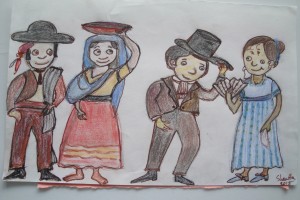As I finished reading (to the end of the epilogue), my initial last thoughts are summed up in “The Five P’s” -a saying drilled into my head by my mother. The Five P’s are simply, “Proper Preparation Prevents Poor Performance.” This is the essence of how I feel about this book. Che writes a detailed “outline” of what is necessary for guerilla warfare to be successful, which ultimately leads to the success of a revolution… supposedly. Now, my knowledge of Che and the Cuban Revolution are incredibly limited, so please forgive any blunders on my part, but from reading this it seems that this revolution was a success, at the very least it was so in the eyes of Che.
He covers a lot of ground for a short book, from the start of a guerilla army to the way in which a successful overthrow should be maintained and how society should change, to even thoughts on how to deal with reactions from capitalism, especially from the States. The main essence I draw from the epilogue is that of Cuban unity, that “an army of six million Cubans will grasp weapons as a single man in order to defend its territory and its Revolution.” The idea that from peasant to worker to those in command will be trained and able to function as an entire unit to defend an ideal, is something that just stirs up emotion, more so if you ignore the use of “man” as opposed to an all-inclusive pronoun.
It is important to note that this book has a direct mention to the role of women in the revolution. There are two things I want to mention here. First is a contradiction made by Che. On page 92, he notes that “despite current belief, she does not create conflicts of a sexual type in the troops.” In the appendices, he writes “it must be emphasized that they [women] can play a destructive part [in the revolution]. The weakness for women that young men have… is well known.” He also mentions in the Role of Women section that women can marry and life as man and wife while in the appendices he says that “it is necessary also to prohibit relations with women” because of the above as well as fear of spies.
Furthermore, while Che originally writes that women can fight alongside the men, and have other important assignments such as communications, while in the epilogue he only talks of “auxiliary” tasks which are in essence the stereo-typical feminine roles such as cooking, cleaning, comforting.





